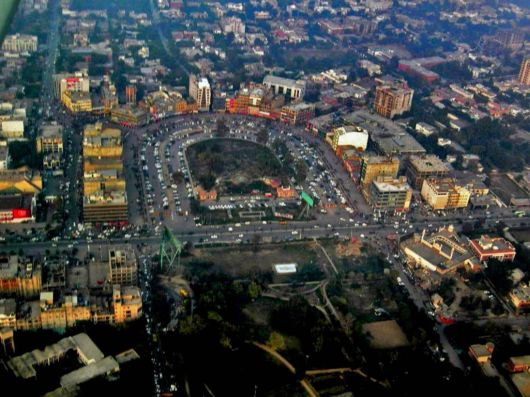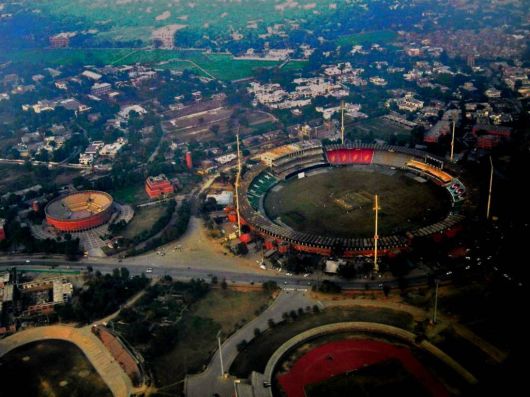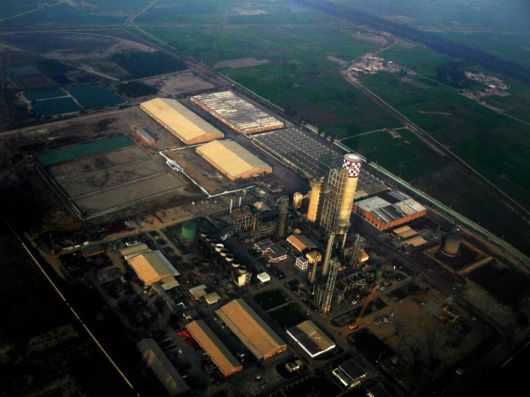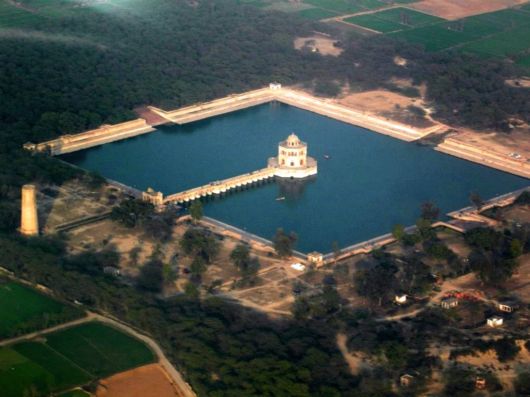
The inverted ‘U’ is Lahore ‘s popular Liberty Market

The famous Gaddafi cricket stadium; the Alhamra Art Gallery; the Alhamra amphiteatre
Foreground: Hockey and athletics stadia. Background, left: grounds of Forman Christian College set up in 1865, named after Dr Charles Forman, an American Protestant missionary who settled in Lahore in 1849. The college was nationalised by the government of the late Prime Minister Z. A. Bhutto (father of Benazir Bhutto) and stayed so for over 30 years before being returned to the mission which had run it since inception.

An older Lahore locality forming an interesting mosaic.

The Dawood Hercules fertiliser plant on the way to Sheikhupura

Sheikhupura Fort, Sheikhupura. Built at the centre of a dense forest in 1607 on the orders of Jehaangeer, the Mughal emperor of India, father of Shah Jehaan who built the Taj Mahal. Sheikhupura, initially called Jehaangeerpura (later Sheikhupura after Jehaangeer’s nickname ‘Sheikhu’), was a hunting retreat for the emperor who came here frequently from Lahore to relax. Interestingly, Alexander the Great fought one of his fiercest battles in the vicinity of Sheikhupura around 100 BC.

Hiran Minaar, built by Emperor Jehaangeer as a monument to Mansraaj his favourite pet deer: A remarkable structure with many features, some being added after Jehaangeer’s death by his son and successor the Emperor Shahjehaan.

Lahore’s Baadshaahi Mosque. Clad in red sandstone this breathtakingly beautiful place of worship was built in 1673 by the Mughal emperor Aurangzeb Aalamgeer, grandson of Jehaangeer and son of Shah Jehaan. Opposite the mosque the white structure is Aalamgeeri Gate, the main entrance to Lahore ‘s historic fort, the Shaahi Qila. Structures behind the gate within the fort’s massive walls were royal quarters for various Mughal emperors. According to excavations and historical references the origins of the Lahore Fort date back to before 1000 AD. Most of the existing structures were built in the reign of the Mughal emperor Akbar between 1550-1600 AD. The densely packed houses to the right of the Fort and Mosque form Lahore ‘s famous Walled City, the original Lahore dating back to over 2000 years ago.

The pink structure with the tall tower and a playing field in front is Lahore’s famous Government College, now Government College University. Established in 1864 ‘GC’, as it is popularly called, soon became and continues to be one of the foremost centres of education in Pakistan. The square structure next to the college is the Quadrangle, the male students’ hostel. Other buildings, mostly academic blocks, within the grounds to the right and left were added later.

